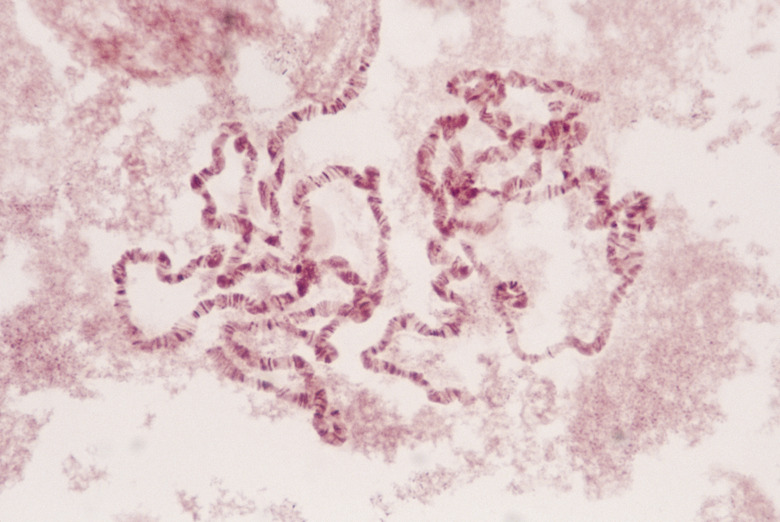How Can A Point Mutation Cause Protein Synthesis To Stop?
The simplest kind of mutation is a point mutation, in which one type of nucleotide, the basic building block of DNA and RNA, is accidentally exchanged for another. These changes are often described as changes in the letters of the DNA code. Nonsense mutations are a specific type of point mutation, which can stop protein synthesis in several ways.
Nonsense Mutations
Nonsense Mutations
Biochemical processes in the cell that convert information in the genetic code into the production and 3-D structure of a specific protein stop when the conversion process reaches a three-letter sequence called a stop codon. If a point mutation changes the sequence of a gene so that it contains a stop codon, the conversion process will stop prematurely, and the resulting protein will be shorter than it should be and the remaining information in the gene that follows the stop codon will not been converted to a protein.
Nonsense-Mediated Decay
Nonsense-Mediated Decay
DNA in human genes stores information that's converted into RNA molecules, which are in turn converted into a specific protein. Essentially, the gene provides instructions for making the RNA, which in turn provides instructions for protein synthesis.
If the RNA contains a stop codon created by a mutation, the conversion machinery will sometimes destroy the RNA through a process called nonsense-mediated decay. Because the RNA is destroyed rather than converted, protein production stops, and related cell functions change or cease.
Gene Regulation
Gene Regulation
Another way that a point mutation stops protein synthesis is gene regulation. Regulatory proteins have specific shapes, which enable them to stick to specific sequences of letters in the DNA code, stay close to a gene and switch the gene on or off. A point mutation in one of these regulatory sequences could change a gene so the regulatory protein no longer sticks to it, switch the gene off and halt of protein production.
Results
Results
The seriousness of a nonsense mutation depends on the specific kind of protein the gene produces and where on the gene the mutation occurs. A nonsense mutation near the beginning of the gene would chop off most of the protein, but a mutation near the end would only lop off a much smaller portion of it. If a protein that performs an essential function chopped of or not produced at all, consequences for the cell or organism could be dire. As many as 15 to 30 percent of all inherited diseases in humans are caused by nonsense mutations.
References
- Benjamin A. Pierce: Genetics, A Conceptual Approach, 2006
- Harvey Lodish, Arnold Berk et al: Molecular Cell Biology, 2008
- EMBL-EBI: Genes and Disease – Single-Base Substitutions
Cite This Article
MLA
Brennan, John. "How Can A Point Mutation Cause Protein Synthesis To Stop?" sciencing.com, https://www.sciencing.com/can-point-mutation-cause-protein-synthesis-stop-2310/. 24 April 2017.
APA
Brennan, John. (2017, April 24). How Can A Point Mutation Cause Protein Synthesis To Stop?. sciencing.com. Retrieved from https://www.sciencing.com/can-point-mutation-cause-protein-synthesis-stop-2310/
Chicago
Brennan, John. How Can A Point Mutation Cause Protein Synthesis To Stop? last modified March 24, 2022. https://www.sciencing.com/can-point-mutation-cause-protein-synthesis-stop-2310/
